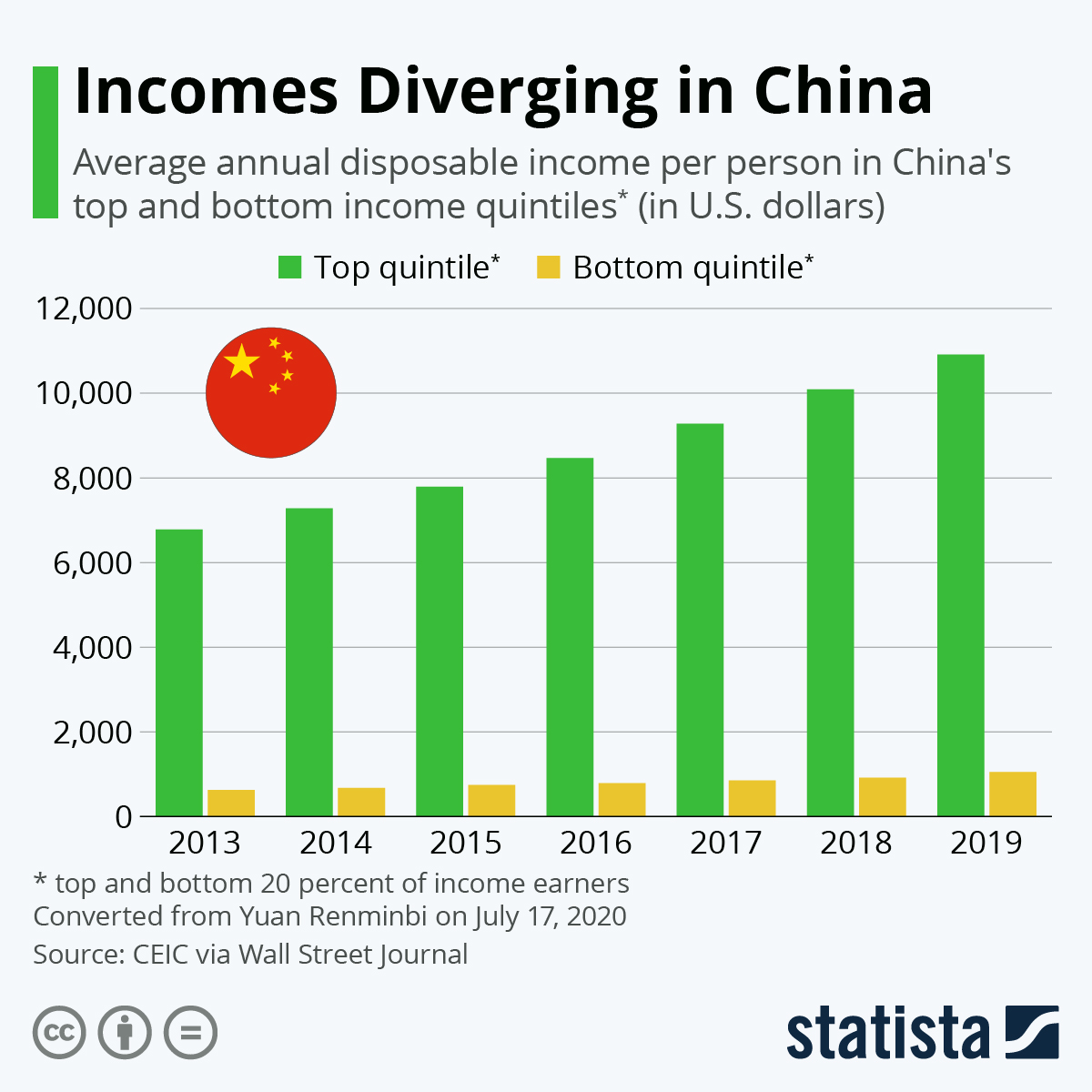Asian countries are expected to make up most of the top 5 in the world by size of GDP at PPP (purchasing power parity) in 2024. But growing prosperity can also mean growing inequality - posing new challenges for the region.
The Chinese example also shows one of the side effects economic growth can have. According to numbers collected by CEIC, average income among the top 20 percent of earners in China rose significantly in the last couple of years, while those 20 percent earning the least did not benefit from the growing prosperity of the country in the same way.
According to the Wall Street Journal, the feat of low-income workers in the country is currently being amplified by the COVID-19 outbreak. A more prosperous China providing a safety net for its citizens seems unlikely, though. Chinese Premier Li Keqiang instead suggested making street vendor stalls legal again in some cities to provide jobs for those hit by the pandemic. China has in the past been aiming at creating a “moderately prosperous society” but only measures this goal in an overall growth of GDP per capita, without taking into account inequality.





















